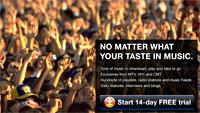 Apple’s hugely popular iTunes music download service looks set to face some mighty competition in the coming months.
Apple’s hugely popular iTunes music download service looks set to face some mighty competition in the coming months.
Although many contenders have tried to take on Apple’s market leading music download business, all of have left with a bloody nose – but the arrival of a new service by a powerful pair of rivals could be Apple’s biggest battle yet.
The new ‘Urge’ service sees industry titans Microsoft and music video monsters MTV Networks teaming up to offer a heavyweight contender to iTunes.
Unlimited downloads
Like Apple’s service, buyers will be charged 99-cents per song download, but there’s an added twist: users subscribing $9.95 a month will be able to download unlimited songs from Urge’s 2-million-song catalogue to their personal PCs.
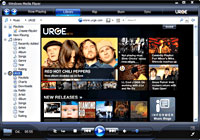 Users wanting to transfer songs onto portable music players can subscribe to the $14.95 service, with tunes protected by anticopying software from Microsoft.
Users wanting to transfer songs onto portable music players can subscribe to the $14.95 service, with tunes protected by anticopying software from Microsoft.
Hoping to succeed where Napster, Yahoo, RealNetworks’s Rhapsody and even Microsoft’s own MSN service have failed, the partnership of the world’s biggest software company and the marketing might and ‘cool’ of MTV could prove a formidable challenge to iTunes.
“They are probably the strongest contender to come into the market for some time,” commented Phil Leigh, a senior analyst for Inside Digital Media, in Florida.
Geoff Harris, product unit manager for Windows Media Player at Microsoft, pointed out that although that other music subscription services have millions of songs on tap, that didn’t help listeners discover new tunes that they might like.
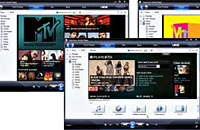 Noting that consumers have embraced satellite radio because it features dozens of channels with music chosen by experts, Harris reckoned that this could prove a real advantage to the Urge service.”You’ve got the experts in music here from MTV doing programming across a whole bunch of genres,” he commented.
Noting that consumers have embraced satellite radio because it features dozens of channels with music chosen by experts, Harris reckoned that this could prove a real advantage to the Urge service.”You’ve got the experts in music here from MTV doing programming across a whole bunch of genres,” he commented.
As well as music files, subscribers to Urge will be able to download video streams of MTV Network programs, including shows from MTV, VH1, and CMT, a country music video channel. Yee-hi!
Sod the iPod
But there is a serious fly in the MP3 ointment for the new Urge service: crazily, its music downloads won’t be playable on the Apple iPod, despite the player hogging around 70 percent of the market for portable music players. Instead, users will have to invest in rival players like those from Creative Technology.
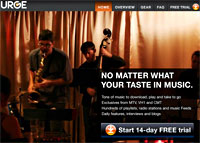 Although Harris admitted that the iPod incompatibility issue was “a hurdle that we have to get over” (an understatement, we reckon!), he added that, “there’s a long way to go in this market,” pointing out that the zillions of iPods sold still represent a fraction of the potential audience for music downloads.
Although Harris admitted that the iPod incompatibility issue was “a hurdle that we have to get over” (an understatement, we reckon!), he added that, “there’s a long way to go in this market,” pointing out that the zillions of iPods sold still represent a fraction of the potential audience for music downloads.
Jason Hirschhorn, MTV Networks’ chief digital officer, insisted that Urge wasn’t interested in taking on Apple.’It’s not about beating Apple, it’s not about beating Rhapsody,” he said, pointing out that MTV has already teamed up with Apple elsewhere to flog some of its TV shows as downloads on the iTunes site.
We believe you, Jason.
Windows Media Player 11 beta
Although Urge is wholly owned by MTV Networks, Microsoft has committed ample resources to the service, embedding the software in its new Windows Media Player 11 beta, a spruced up upgrade to its media software offering iTunes-like integration.
The new player adds browsing by album cover and a search box to find media as well as offering improved content management, with less clicks needed to burn a CD, for example.
Urge will only be available initially in the United States, with the beta player linked to US-only music stores until the final version of Windows Media Player 11 is released.
Jonathan Arber, a research analyst with Ovum in London has high hopes for the service, “I think there’s a real chance we will see them become the top of the second tier below Apple.”
Assuming the thing is stable and doesn’t come with a zoo-full of bugs, of course.
 Sony has whipped out its first laptop equipped with a next-generation Blu-ray optical disk drive, saying that it will be available in Japan next month.
Sony has whipped out its first laptop equipped with a next-generation Blu-ray optical disk drive, saying that it will be available in Japan next month.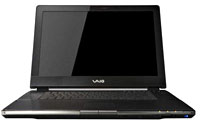 The AR-Series will also come with a HDMI (High Definition Multimedia Interface) output for hooking up the lappie to a HD-ready TV or Full HD desktop display.
The AR-Series will also come with a HDMI (High Definition Multimedia Interface) output for hooking up the lappie to a HD-ready TV or Full HD desktop display.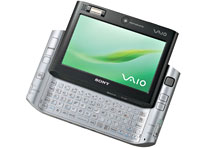 Powered by Intel Core Solo U1400 (1.2 Ghz)/U1300 (1.06 Ghz) the pint-sized PC will sport an Intel 945GMS Express chipset, 512MB RAM, 20/30 GB hard drive and 69 key QWERTY keyboard.
Powered by Intel Core Solo U1400 (1.2 Ghz)/U1300 (1.06 Ghz) the pint-sized PC will sport an Intel 945GMS Express chipset, 512MB RAM, 20/30 GB hard drive and 69 key QWERTY keyboard. A promising anti-spam service by Israeli company Blue Security has been brought to its knees by a renegade spammer hell-bent on protecting his spamming industry
A promising anti-spam service by Israeli company Blue Security has been brought to its knees by a renegade spammer hell-bent on protecting his spamming industry Spammers fight back
Spammers fight back With Blue Security reduced to communicating through their secondary TypePad-hosted Weblog at bluesecurity.blogs.com, the spammer moved in for the kill, launching a ferocious denial of service attack that closed down the TypePad and Live Journal servers owned by Six Apart.
With Blue Security reduced to communicating through their secondary TypePad-hosted Weblog at bluesecurity.blogs.com, the spammer moved in for the kill, launching a ferocious denial of service attack that closed down the TypePad and Live Journal servers owned by Six Apart.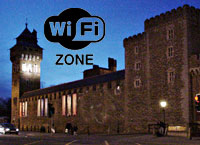 BT has today announced its plans to set up wide-area Wi-Fi networks in 12 cities, giving perambulating folks access to high-speed Internet and telecoms services.
BT has today announced its plans to set up wide-area Wi-Fi networks in 12 cities, giving perambulating folks access to high-speed Internet and telecoms services. Lovely, lovely Cardiff was the city chosen for the first roll out of the Wireless City scheme, with BT Openzone hotspots being installed in many locations in the city centre.
Lovely, lovely Cardiff was the city chosen for the first roll out of the Wireless City scheme, with BT Openzone hotspots being installed in many locations in the city centre.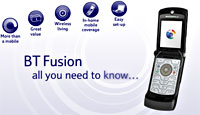 BT is also looking to use the service to promote a Wi-Fi version of its BT Fusion mobile phone services which will be launched later this year.
BT is also looking to use the service to promote a Wi-Fi version of its BT Fusion mobile phone services which will be launched later this year.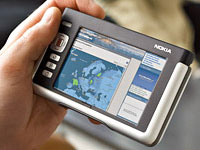 Nordic mobile goliaths Nokia have unveiled an upgrade for their Nokia 770 Internet Tablet which gives the chunky device VoIP and instant messaging capabilities through Google Talk.
Nordic mobile goliaths Nokia have unveiled an upgrade for their Nokia 770 Internet Tablet which gives the chunky device VoIP and instant messaging capabilities through Google Talk.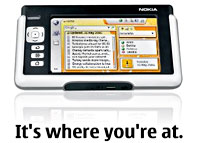 Sales weren’t too hot though, but Nokia reckon that by bolting on VoIP phone capabilities they can turbo charge unit-shifting, with Virtanen insisting that internet telephony is “the key for us to reach higher sales volumes.”
Sales weren’t too hot though, but Nokia reckon that by bolting on VoIP phone capabilities they can turbo charge unit-shifting, with Virtanen insisting that internet telephony is “the key for us to reach higher sales volumes.”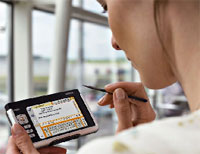 The updated OS also boasts enhanced text typing with full-screen finger keyboard, improved memory performance and a ‘refreshed’ look (did they throw a bucket of water at it, or something?).
The updated OS also boasts enhanced text typing with full-screen finger keyboard, improved memory performance and a ‘refreshed’ look (did they throw a bucket of water at it, or something?). Homechoice have just done a Video on Demand (VoD) deal with CNN to carry their content. It’s the first VoD deal that CNN International have done, meaning the first outside the US.
Homechoice have just done a Video on Demand (VoD) deal with CNN to carry their content. It’s the first VoD deal that CNN International have done, meaning the first outside the US. CNN, like many other content creators are starting to ramp up their alternative channels for output, thinking beyond the POTV (Plain Old TeleVision). Last week they announced a deal with Telewest to deliver an interactive text-based version of the CNN news service.
CNN, like many other content creators are starting to ramp up their alternative channels for output, thinking beyond the POTV (Plain Old TeleVision). Last week they announced a deal with Telewest to deliver an interactive text-based version of the CNN news service.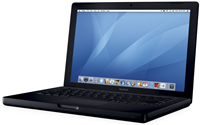 The much-anticipated launch of the low-end new Intel-powered MacBook’s has just happened – or IntelMac for the rest of us as it might become known (or not).
The much-anticipated launch of the low-end new Intel-powered MacBook’s has just happened – or IntelMac for the rest of us as it might become known (or not).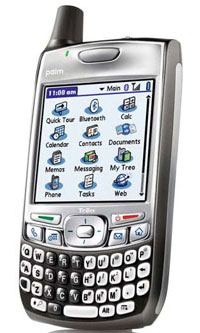 Palm have announced the successor to their hugely successful Palm OS-powered Treo 650 smartphone, the Treo 700p.
Palm have announced the successor to their hugely successful Palm OS-powered Treo 650 smartphone, the Treo 700p. Bundled with the phone is DataViz’ Documents To Go for reading and editing Microsoft Office files, a PDF viewer and an email client that works with Exchange Server 2003 via ActiveSync, plus POP and IMAP accounts.
Bundled with the phone is DataViz’ Documents To Go for reading and editing Microsoft Office files, a PDF viewer and an email client that works with Exchange Server 2003 via ActiveSync, plus POP and IMAP accounts.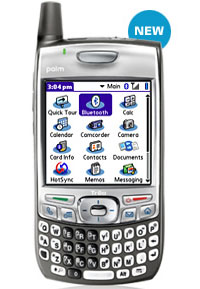 So much so that we’re even prepared to forgive the omission of Wi-Fi in the latest Treo (Palm in the US insist that EV-DO should be enough.)
So much so that we’re even prepared to forgive the omission of Wi-Fi in the latest Treo (Palm in the US insist that EV-DO should be enough.) As you’re no doubt aware, Guy Kewney is a contributor to Digital-Lifestyles. His old-school journalism is well-informed and his experience with technology is extensive. He’d been a journalist hero of ours since we were knee high to a
As you’re no doubt aware, Guy Kewney is a contributor to Digital-Lifestyles. His old-school journalism is well-informed and his experience with technology is extensive. He’d been a journalist hero of ours since we were knee high to a 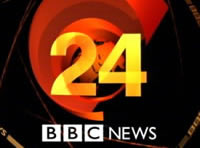 You must
You must  According to one paper this morning, the BBC has deleted the entire damning video. Untrue, I suspect; but even if true, the clip has circulated widely enough that it would be futile. And now that the Mail has done the deed and published the complete clip, you can actually download it.
According to one paper this morning, the BBC has deleted the entire damning video. Untrue, I suspect; but even if true, the clip has circulated widely enough that it would be futile. And now that the Mail has done the deed and published the complete clip, you can actually download it.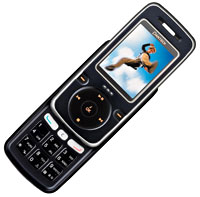 Straight out of the school of Advanced Homage to iPods comes this new music phone from South Korean phone maker Pantech.
Straight out of the school of Advanced Homage to iPods comes this new music phone from South Korean phone maker Pantech.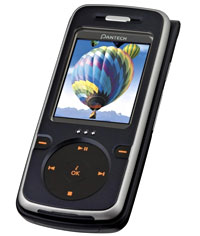 Rounding off the phone’s feature set is stereo audio-enabled Bluetooth and a speakerphone in the 10.2 x 4.7 x 1.8cm package which weighs in at 94.1g.
Rounding off the phone’s feature set is stereo audio-enabled Bluetooth and a speakerphone in the 10.2 x 4.7 x 1.8cm package which weighs in at 94.1g.